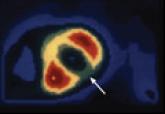Article

A way to reverse CAD?
- Author:
- Caldwell B. Esselstyn Jr, MD
- Gina Gendy, MD
- Jonathan Doyle, McS
Though current medical and surgical treatments manage coronary artery disease, they do little to prevent or stop it. Nutritional intervention, as...
Article
A Strategy to Arrest and Reverse Coronary Artery Disease A 5-Year Longitudinal Study of a Single Physician's Practice
- Author:
- Caldwell B. Esselstyn Jr, MD
- Stephen G. Ellis, MD
- Sharon V. Medendorp, MPH
- Timothy D. Crowe
